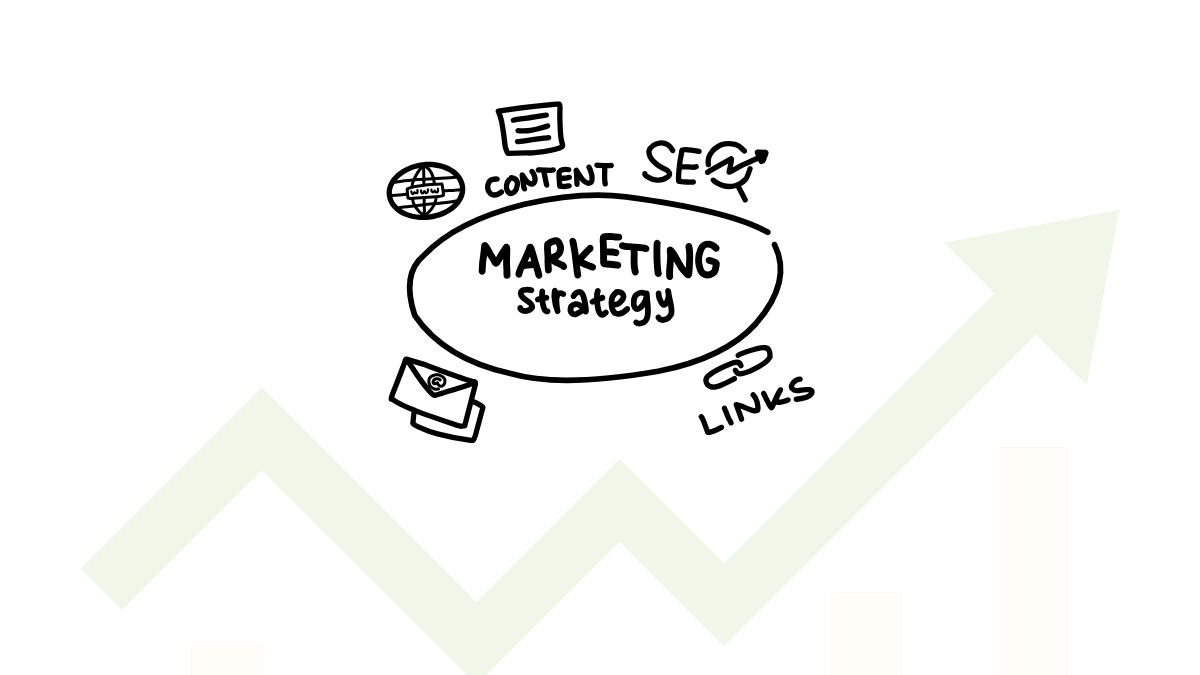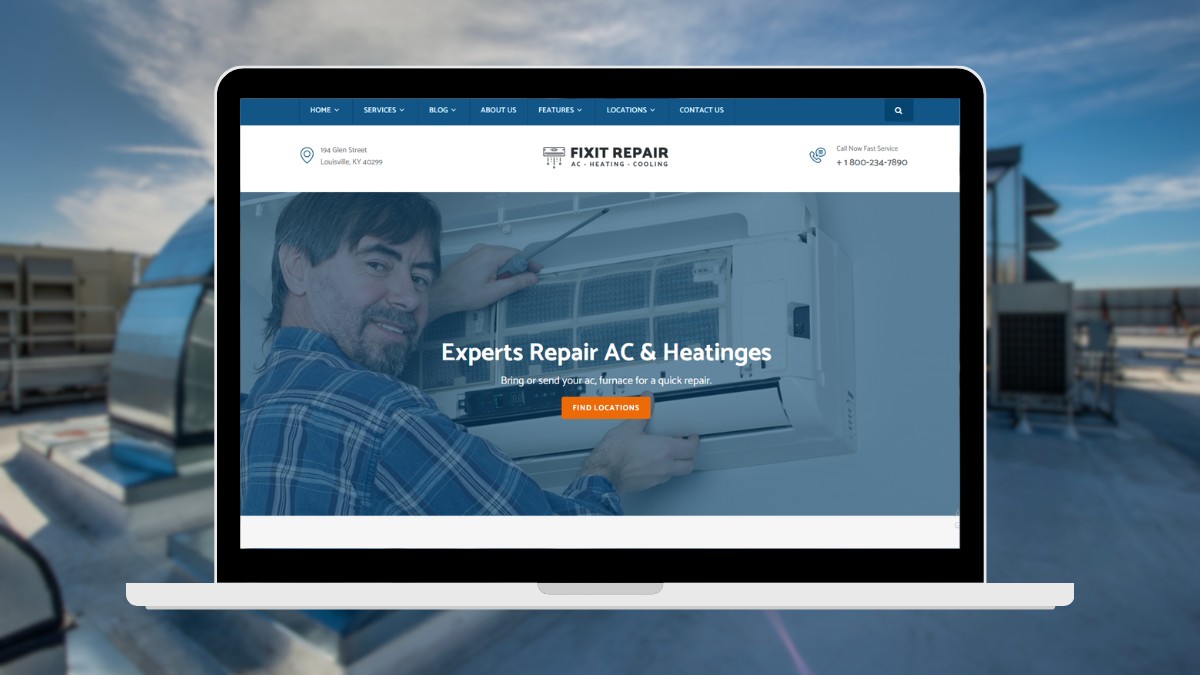
Digital Marketing for HVAC Companies
Your phone rings. It's a homeowner whose AC unit just died in the middle of a heatwave. They found you with a quick search on their phone. This is the power of digital marketing. It's not about complex code or confusing jargon; it's about being the first person your customers find when they need you most.
Many HVAC business owners think marketing is just about flyers or a sign on the side of a van. While those have their place, your customers are looking for you online. This guide will walk you through the essentials of digital marketing for your HVAC business. We'll break down the important strategies into simple, actionable steps, show you how to attract more customers, and equip you with real-world examples and next-level tips.
What is Digital Marketing and Why Does it Matter?

Think of digital marketing as your online toolbox for reaching customers. Instead of waiting for the phone to ring, you're actively putting your business in front of people who need your services right now. For an HVAC company, this is a game-changer.
Why? Because when an air conditioner breaks in July or a furnace gives out in January, people don't flip through the Yellow Pages anymore. They grab their smartphone and search for "emergency HVAC repair near me." If your business doesn't show up in those search results, you're invisible to a massive pool of potential customers.
Case Study:
An HVAC company in Denver saw website visits triple after they started focusing on their online presence. By targeting common search phrases and keeping their Google Business Profile up-to-date, they captured local customers searching for “24-hour AC repair” or “best HVAC near me.”
Digital marketing helps you:
-
Be found online: Show up when local homeowners are searching for your services.
-
Build trust: A professional website and positive reviews make customers feel confident choosing you.
-
Stay top-of-mind: Keep in touch with past customers so they call you for their next maintenance or replacement.
-
Target the right people: Focus your efforts on the specific neighborhoods and homeowners you want to serve.
Key Digital Marketing Strategies for HVAC

Let's dive into the core strategies that will make the biggest difference for your business. You don't need to be an expert in all of them at once. Start with one or two and build from there.
Search Engine Optimization (SEO)
SEO is the process of making your website more attractive to search engines like Google. The goal is to appear on the first page of search results for terms your customers are using.
Imagine two HVAC companies. Company A has a website, but it's not optimized. Company B has an SEO-friendly website. When someone searches "furnace repair in [Your City]," Company B's website shows up at the top. Company A is buried on page five. Which one do you think gets the call?
How to get started with SEO:
-
Find your keywords: Think like your customer. What would they type into Google? Examples include "AC installation," "heating service," and "emergency HVAC repair."
-
Use keywords on your website: Place these phrases naturally on your homepage, service pages, and blog posts. Don't stuff them in unnaturally; write for humans first.
-
Create helpful content: Write blog posts that answer common customer questions, like "How often should I service my AC?" or "Signs you need a new furnace."
-
Optimize for voice search: Many customers use voice assistants today. Phrases like “Who fixes ACs near me?” or “HVAC repair open now” are common—work these conversational phrases into your content.
-
Technical tips: Make sure your site loads quickly and is secure (HTTPS), as search engines prefer fast and safe websites.
Example:
A regional HVAC service created a blog on “Winter Furnace Maintenance Tips.” The article attracted local readers and ranked on the first page of Google for related searches in their city. Result? Increased service calls every fall.
Pay-Per-Click (PPC) Advertising
PPC is a way to buy your way to the top of search results. You've seen these before—they're the ads that appear above the regular search listings. With platforms like Google Ads, you bid on keywords, and you only pay when someone clicks on your ad.
PPC is fantastic for getting immediate results. While SEO can take months to show significant effects, a PPC campaign can start bringing in leads the day you launch it. It's especially effective for emergency services because you can capture the attention of someone who needs help immediately.
Actionable Tips:
-
Start with location-based keywords: For example, “AC repair [your city]” or “furnace installation near me.”
-
Use ad extensions: Show your phone number, location, and direct links to “Book Now” or “Get a Quote.”
-
Set a budget: Begin with a modest daily spend and increase as you see results.
-
Track conversions: Use tools in Google Ads to see exactly how many calls or form submissions you get from each ad.
Case Study:
An HVAC business in Texas targeted “emergency AC repair” with PPC ads during a heatwave. Their ad budget returned 5X in new business over two weeks.
Social Media Marketing
Social media isn't just for sharing vacation photos. Platforms like Facebook can be powerful tools for HVAC companies. You can connect with your local community, share helpful tips, and run targeted ads.
Simple social media ideas:
-
Share before-and-after photos: Show off a clean new installation.
-
Post seasonal reminders: “Don't forget to schedule your fall furnace tune-up!”
-
Run a contest: Offer a free service or a smart thermostat to a lucky follower.
-
Use Facebook Ads: Target homeowners in specific zip codes who have shown interest in home improvement.
Deep Dive:
Try creating local “how-to” or tip-based videos, like “How to Keep Your Home Cool Without Blasting the AC.” Share these clips on Facebook or Instagram. They build trust and get shared by your audience.
Actionable Tip:
Respond quickly to comments and messages—social platforms now show response rates publicly, and fast replies help your reputation.
Video Marketing
Video is king online these days. A quick video introduction on your website or social media can help people put a face to your company and make you stand out.
How to use video marketing:
-
Create a short “About Us” video: Show your team, your trucks, and your shop. This builds trust and shows you’re real people.
-
Demonstration videos: Show a technician performing a simple maintenance check, or explain the benefits of a programmable thermostat.
-
Customer testimonials: Ask satisfied homeowners if they’ll share their experience on camera—real stories go a long way.
-
YouTube channel: Upload your tips and case studies to attract both current and future customers.
Case Study:
A small HVAC business filmed a 30-second intro video for their homepage and social accounts. Viewers spent more time on their site, and call volume increased 20% after the video went live!
Email Marketing
Email marketing is one of the most cost-effective ways to stay connected with your customers. You can use it to nurture leads and encourage repeat business. The key is to provide value, not just sell.
What to send in your emails:
-
Maintenance reminders: A simple email reminding a customer their system is due for a check-up can lead to easy service calls.
-
Special offers: Offer a discount on a new installation or a seasonal service package.
-
Helpful tips: Send articles on how to save energy or improve indoor air quality.
-
Referral incentives: Offer a small reward or discount to customers who refer friends or neighbors.
Actionable Tip:
Segment your list. Send new customer promotions to first-timers, and loyalty offers to repeat business. Personalize your emails when possible.
Customer Loyalty Programs
Every HVAC company loves repeat customers—they’re easier to serve and often refer new clients. Launch a loyalty program with perks and rewards.
Ideas:
-
Reward points: For every service or referral, customers collect points that can be redeemed for discounts.
-
VIP maintenance plans: Offer discounted tune-ups and priority scheduling for members.
-
Exclusive offers: Send out special deals that only loyalty members can access.
Example:
A family-run HVAC company introduced an annual service club for $199/year. Members got priority bookings during peak seasons and one free diagnostic visit—a simple change that boosted retention and recurring revenue.
Your Website: Your Digital Storefront

Your website is often the first impression a customer has of your business. A slow, confusing, or outdated site can send them running to a competitor. A great HVAC website should be clean, professional, and easy to use.
Key elements of a user-friendly HVAC website:
-
Clear contact information: Your phone number should be visible at the top of every page.
-
Mobile-friendly design: Most people search on their phones. Your site must look and work great on a small screen.
-
Easy navigation: Customers should be able to find your services, service area, and about page without any hassle.
-
Strong calls to action (CTAs): Use buttons like "Request a Quote" or "Schedule Service Now" to guide visitors on what to do next.
-
Trust signals: Display logos of brands you work with, certifications, and customer testimonials to build credibility.
-
Online scheduling: Allow visitors to book appointments directly from your website.
Example:
After adding an easy “Book Now” button and a chatbot for scheduling, one HVAC firm saw a 35% increase in appointment requests from their website.
Actionable Tips:
-
Test your website on multiple devices to make sure everything looks right.
-
Update your website at least twice a year with new photos, offers, and testimonials.
-
Create dedicated landing pages for each service (“Heating Repair,” “Duct Cleaning,” etc.) to boost SEO.
The Power of Local SEO

For an HVAC business, being found locally is everything. Local SEO is a specialized part of SEO that focuses on making you visible in local search results and on Google Maps.
When someone searches for "AC repair near me," Google uses their location to show them the closest and most relevant businesses. Your goal is to be one of those businesses.
How to Improve Your Local SEO
The most important step is to claim and optimize your Google Business Profile (GBP). This is the free listing that appears in Google Maps and the "local pack" in search results.
To optimize your GBP:
-
Claim your profile: Go to google.com/business and search for your business name and address.
-
Fill out everything: Add your business name, address, phone number, hours, and website. Be consistent everywhere online.
-
Choose the right categories: Select "HVAC Contractor" as your primary category and add others like "Air Conditioning Repair Service."
-
Upload photos: Add high-quality pictures of your team, vans, and work.
-
Encourage reviews: Ask satisfied customers to leave a review on your Google profile.
Advanced Tip:
Solicit reviews with a follow-up text including a direct link after each job is done.
-
Local directory listings: Get your business listed on Yelp, Angi, HomeAdvisor, and local chamber of commerce sites. The more consistent your listings, the better.
-
Local backlinks: Partner with local suppliers or home service companies to get backlinks to your website—a big boost for local SEO.
Case Study:
A suburban HVAC firm doubled their incoming service calls after actively requesting Google reviews and uploading weekly photos to their GBP.
Managing Your Online Reputation

Online reviews are the new word-of-mouth. A steady stream of positive reviews on Google, Yelp, and other sites builds immense trust. On the other hand, negative reviews can't be ignored.
Tips for managing your online reviews:
-
Ask for reviews: The easiest way to get reviews is to ask. Instruct your technicians to ask happy customers after a successful job. You can also send a follow-up email with a direct link to your review profiles.
-
Respond to all reviews: Thank customers for positive feedback. For negative reviews, respond professionally and calmly. Acknowledge their issue, apologize for their experience, and offer to resolve the problem offline. Seeing a business owner respond thoughtfully to criticism shows potential customers that you care.
-
Showcase reviews: Embed the best customer testimonials on your website or social media.
-
Monitor review sites regularly: Use free tools like Google Alerts or paid services like Birdeye or Podium to receive notifications of new reviews.
Actionable Tip:
Set up a process so every technician in the field asks the homeowner for a review upon job completion. Reward employees for each verified review.
How to Know if Your Marketing is Working

You don't want to spend money on marketing without knowing if it's paying off. Basic analytics help you track your performance and make smarter decisions.
Google Analytics is a free tool that shows you how people find and use your website. You don't need to be a data scientist to use it. Focus on a few key metrics:
-
Traffic: How many people are visiting your website?
-
Traffic sources: Where are they coming from? (e.g., Google search, Facebook, paid ads).
-
Conversions: This is the most important one. A conversion is when a visitor takes a desired action, like filling out a contact form or calling you. You can set up goals to track how many leads your website is generating.
Advanced Analytics Tools:
-
Call tracking: Use services like CallRail to see which ads or pages make your phone ring.
-
Heatmaps: Tools like Hotjar show you where users click and spend time on your website.
-
CRM integration: Connect your website forms to a system like HubSpot or ServiceTitan to track every lead from “hello” to “job complete.”
Example:
One HVAC company noticed that 80% of their website form submissions happened after 7pm. They adjusted their phone coverage to handle evening leads and saw their conversion rate jump.
Actionable Tips:
-
Review your analytics weekly—track what’s working and what needs fixing.
-
Don’t be afraid to turn off strategies that aren’t delivering results. Focus on what drives calls and customers.
Final Thoughts
Digital marketing can feel overwhelming, but it doesn't have to be. Start small. Claim your Google Business Profile this week. Next month, ask a few happy customers for reviews. The key is to take consistent action.
Remember, you don’t have to do everything at once. Pick one or two strategies from this guide and implement them step by step. Test what works and keep building on your success.
Stronger Call to Action:
-
Audit your current online presence: Google your business and see what customers see. Look for gaps in listings, reviews, or outdated info.
-
Make a simple plan: List your top 2-3 marketing goals for the next three months—like "Get 10 new Google reviews," "Add a blog post each month," or "Shoot a team video."
-
Reach out for expert help: Many great HVAC businesses partner with local marketing professionals or agencies to handle the heavy lifting.
-
Never stop learning: The digital world keeps changing. Subscribe to industry newsletters or groups to stay sharp.
By building a strong online presence, you put your HVAC company in the right place at the right time. You connect with customers when they need you most, building a foundation for sustainable growth for years to come.
Ready to take control of your online presence and bring in more leads? Start today—your next loyal customer could find you with just one click!
30 minutes
Expert Consultation
Terms & Agreements
By booking a free 30-minute consultation, you agree to our terms, including scheduling, cancellation policies, and confidentiality. The session provides expert advice without guarantees of specific outcomes or results.






Leave a Reply
Your email address will not be published. Required fields are marked *